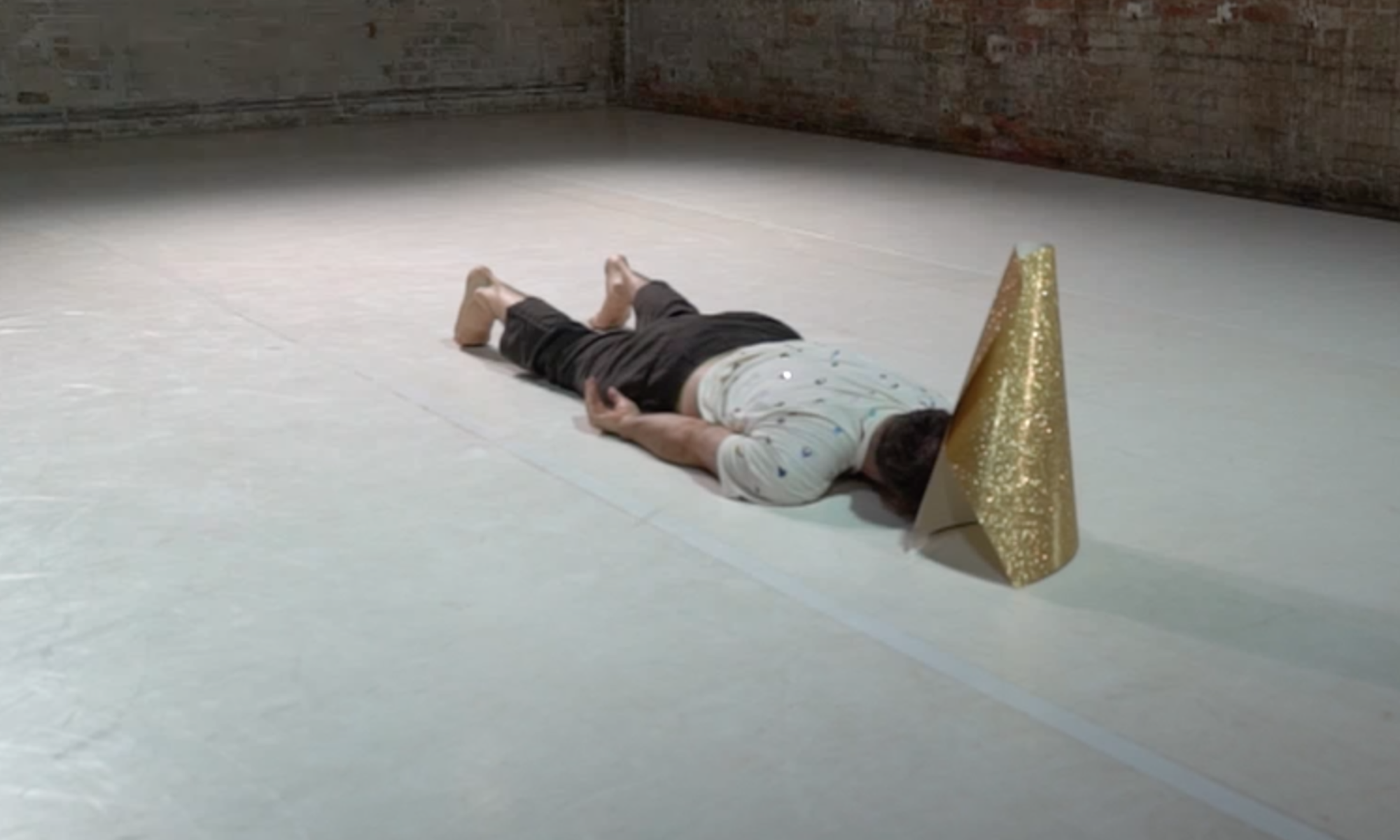Temporaries
by Ana Dubljevic, Dusan Brocic, Igor Koruga, Jovana Rakic Kiselcic, Ljiljana Tasic, and Marko Milic
14.9.2013
A few thoughts and words about a performance I saw and participated in this past Saturday in Studio 5 at the Uferstudios –
From the program – the performance’s aim is create “a space and ‘community’ to discuss and question problems of the current and potential local dance scene in Belgrade…” Another aim was “to form a temporary communicational community with the spectators”.
After the audience sat down on six little islands of blankets, one of the performers said that one side(or three of the islands) of the audience would play charades and the other side would receive snacks. When someone guessed the word or phrase, he or she was able to select a food item from a nearby cart. The food was also for sale (capitalism, anyone?!?) All fine and good, but she or he was not supposed to share the food with anyone else. The non charade playing side would then select which number from a list of nine cultural-artistic programs most fit the charade word. This process was repeated until each number of the list had been selected. Some of the words/phrases were – United We Stand, Readiness is All, Hospitality, Mediation.
The rules about how to get food from the cart changed slightly after some round. After I guessed the phrase, United We Stand, for example, I had to form a chain with my group to reach the cart which had been wheeled away from our seating area. I took a cake, two plates of sandwiches, and some plastic cups. Before I reached the cart, one of the performers wheeled the cart away even further. A quick and inadequate description of the piece, I know. But I do not want to recall the events for you. You should go see the piece if you can.
This piece, as it is about the conditions in Belgrade, made me, an English speaking American, think about growing up in a non-English speaking communist environment. The gesture used in charades to indicate that the word was English was the thumbs-down gesture. Thumbs down can be read as indicating bad or of little value. The gesture to indicate another language was to point behind one’s self with the thumb. If we are to read the thumbs down as “English is bad”, do we then read the other gesture as “All other languages are backwards or in the past”?
The random allocation of resources, i.e. who gets the food, at the beginning – a simulacrum of the granting process run by cities and governments, maybe?
The rule, which was pretty quickly broken, of not being able to share food with people in your group or between groups was supposed to create some discord and feelings of inequality, I am guessing.
The changing rules of how people are supposed to get food – a vestigial remnant of the shifting governments in the Balkan region, perhaps.
Although in the program it states that the piece “can confront serious and social art issues”, the piece did not really confront me with those topics. I could see how the topics were indicated, but the atmosphere was too comfortable for confronting serious issues. If the seating areas were raised and separated by lights so that audience members would have to traverse through a spatial and light barrier, people might be less likely to break the rules. If we had actually run out of time and not been able to guess the word in one round of charade, I might have felt more of an edge to the piece. If people who did guess the word and got to pick an item from the food cart were moved to a separate area so they would have to cross the stage to share their resource, they might be less likely to share. I wonder how the theater in Belgium will be arranged.
Due to time constraints, I was not able to stay till the end of the performance, so I do not know how it ended.
Three pieces of the Cultural-Artistic Program that I was most drawn to are the choreographed duet that was done once with round loaves of bread and another time with a different song and bananas; the accumulated line of people rocking forward and back. It could have stayed in that line longer, in my opinion; and the simulation of people at the starting line of a foot race.
I wish I could go to Kortrjik to see how the piece develops and how the audience participates.
